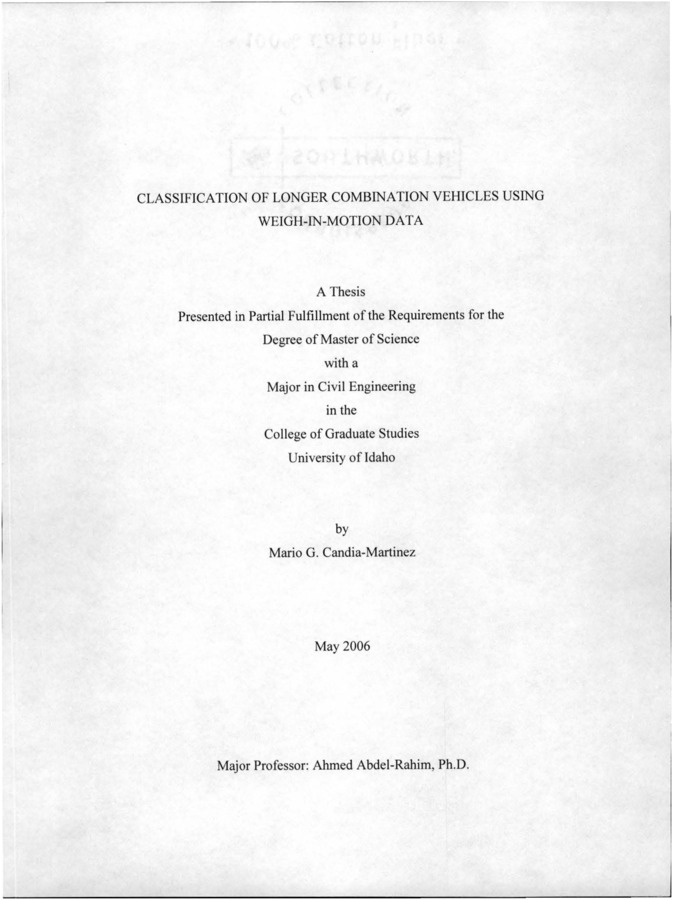Please note: this collection is no longer updated. Visit our Theses and Dissertations Collection in VERSO for all U of I ETD since 2012.
ETD PDF
Classification of Longer Combination Vehicles Using Weigh-In-Motion Data
Citation
Candia-Martinez, Mario G. (2006). Classification of Longer Combination Vehicles Using Weigh-In-Motion Data. Theses and Dissertations Collection, University of Idaho Library Digital Collections. https://www.lib.uidaho.edu/digital/etd/items/etd_892.html
- Title:
- Classification of Longer Combination Vehicles Using Weigh-In-Motion Data
- Author:
- Candia-Martinez, Mario G
- Date:
- 2006
- Keywords:
- civil engineering
- Program:
- Civil Engineering
- Abstract:
- Although short-term counts and permanent counts of trucks is common practice in most states in general, the classification system used for these vehicles is generally based on the Federal Highway Administration's (FHWA) 13 vehicle classification system. This system does not allow for the identification of longer combination vehicles (LCV s), leading to difficulty in the systematic identification of these vehicles and difficulty in LCV truck sampling. The objective of this research was to propose a method that would allow systematic LCV truck sampling through the development of discriminant functions based on a classification algorithm developed for LCV and non-LCV truck classification; additionally seasonal factors were to be derived based on the truck classification results. Seasonal factors would then be used for seasonal variation comparison between truck classes and road types. The data consisted of weight in motion (WIM) raw data from Idaho, Utah, and Montana. This objective was accomplished through the development of an algorithm that systematically classifies raw WIM data into five truck categories, three of which are LCV truck types. The discriminant function was then developed with the truck classification algorithm results. Once the data were classified accordingly, the results were used for seasonal factor development; seasonal variations between road classes and truck types were compared. Based on the results of this research, it was concluded that raw WIM data can be used for LCV truck identification through the application of a truck characteristics based algorithm and a discriminant function. This research also found that the classification potential of a discriminant function is considerably improved with the inclusion of major axle spacings as a classification variable. Additionally, based on the seasonal factors developed from the algorithm and discriminant function classified data, it was concluded that triple trailer trucks tend to demonstrate different seasonal patterns in comparison to other LCV and non-LCV truck types when comparing seasonal factor trends. Seasonal variation for LCV s between road types (interstate versus non-interstate highways) was not statistically significant for any of the truck types with the exception of singles during winter months.
- Description:
- Thesis (M.S., Civil Engineering) -- University of Idaho, 2006
- Major Professor:
- Abdel-Rahim, Ahmed
- Type:
- Text
- Format Original:
- text
- Format:
- application/pdf
Rights
- Rights:
- In Copyright - Educational Use Permitted. For more information, please contact University of Idaho Library Special Collections and Archives Department at libspec@uidaho.edu.
- Standardized Rights:
- http://rightsstatements.org/vocab/InC-EDU/1.0/

